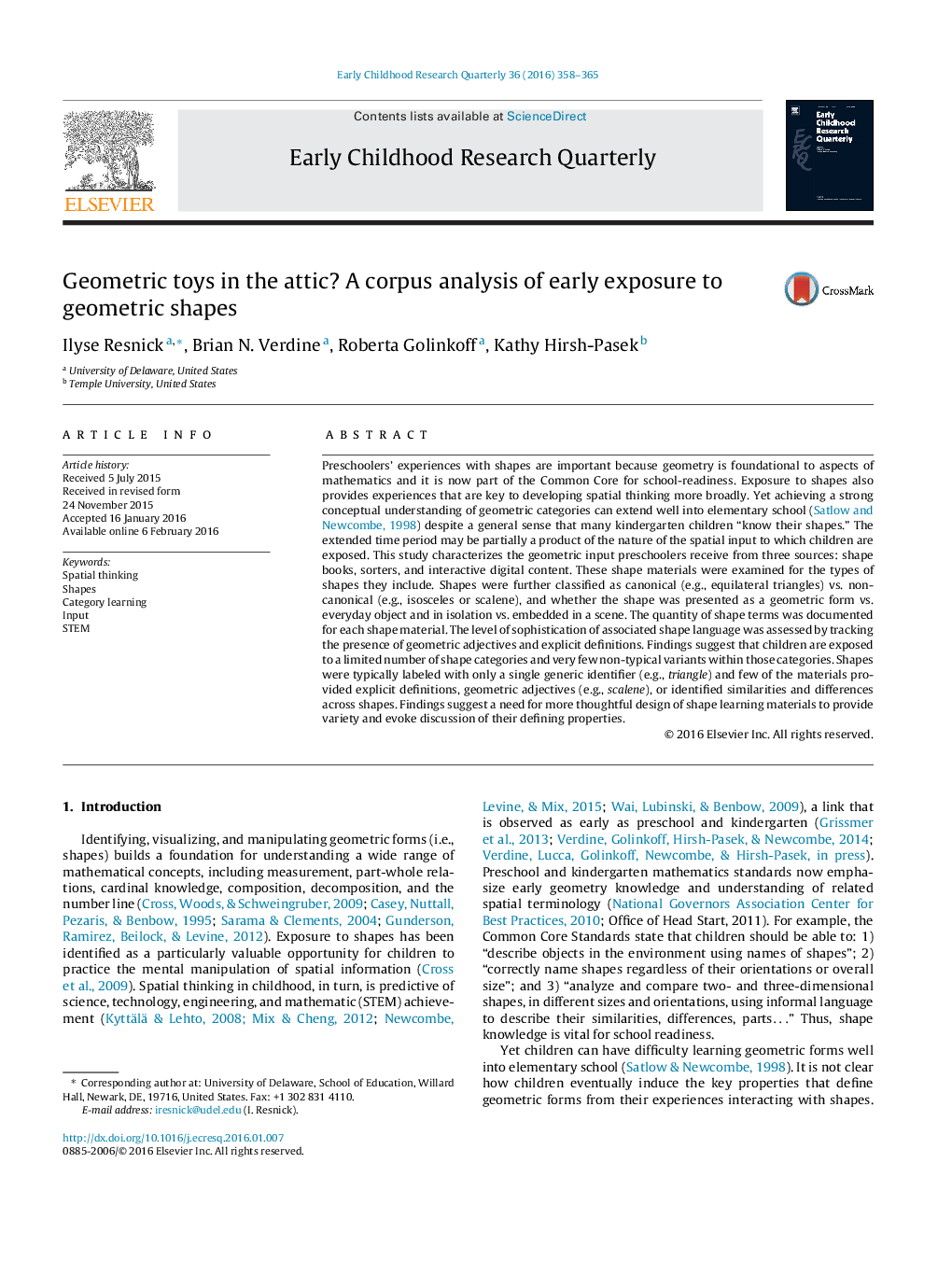| کد مقاله | کد نشریه | سال انتشار | مقاله انگلیسی | نسخه تمام متن |
|---|---|---|---|---|
| 353671 | 618936 | 2016 | 8 صفحه PDF | دانلود رایگان |
• The geometric input preschoolers receive from shape books, sorters, and interactive digital content is analyzed.
• Shape materials include a limited number of shape categories and very few non-typical variants.
• Shapes were typically labeled with only a single generic identifier (e.g., triangle).
• Few shape materials provided explicit definitions, geometric adjectives (e.g., scalene), or identified similarities and differences across shapes.
• Providing a variety of shapes and comparison of geometric properties would likely increase learning.
Preschoolers' experiences with shapes are important because geometry is foundational to aspects of mathematics and it is now part of the Common Core for school-readiness. Exposure to shapes also provides experiences that are key to developing spatial thinking more broadly. Yet achieving a strong conceptual understanding of geometric categories can extend well into elementary school (Satlow and Newcombe, 1998) despite a general sense that many kindergarten children “know their shapes.” The extended time period may be partially a product of the nature of the spatial input to which children are exposed. This study characterizes the geometric input preschoolers receive from three sources: shape books, sorters, and interactive digital content. These shape materials were examined for the types of shapes they include. Shapes were further classified as canonical (e.g., equilateral triangles) vs. non-canonical (e.g., isosceles or scalene), and whether the shape was presented as a geometric form vs. everyday object and in isolation vs. embedded in a scene. The quantity of shape terms was documented for each shape material. The level of sophistication of associated shape language was assessed by tracking the presence of geometric adjectives and explicit definitions. Findings suggest that children are exposed to a limited number of shape categories and very few non-typical variants within those categories. Shapes were typically labeled with only a single generic identifier (e.g., triangle) and few of the materials provided explicit definitions, geometric adjectives (e.g., scalene), or identified similarities and differences across shapes. Findings suggest a need for more thoughtful design of shape learning materials to provide variety and evoke discussion of their defining properties.
Journal: Early Childhood Research Quarterly - Volume 36, 3rd Quarter 2016, Pages 358–365
